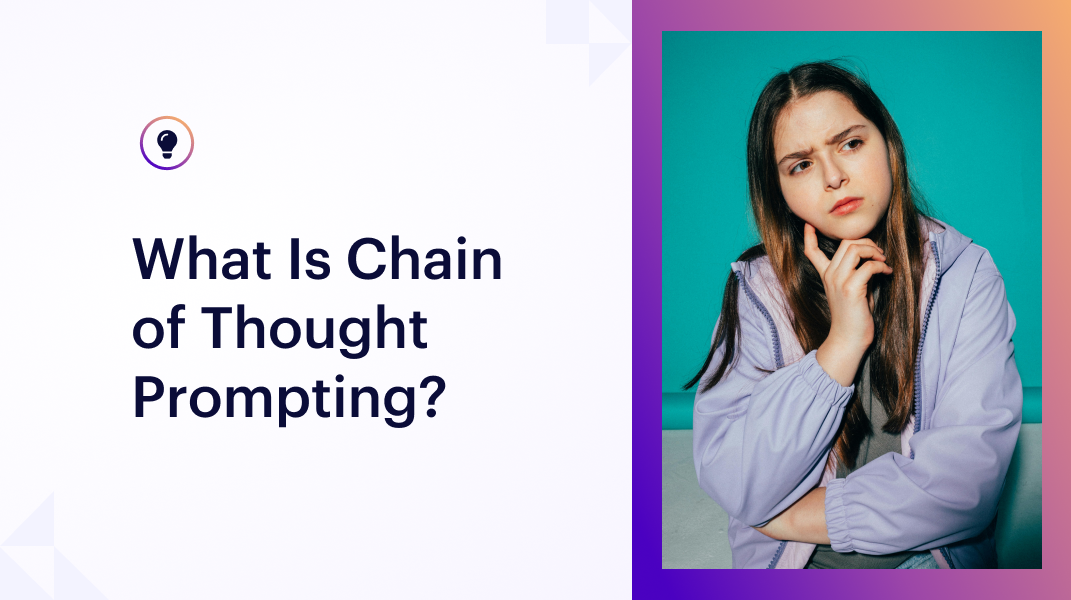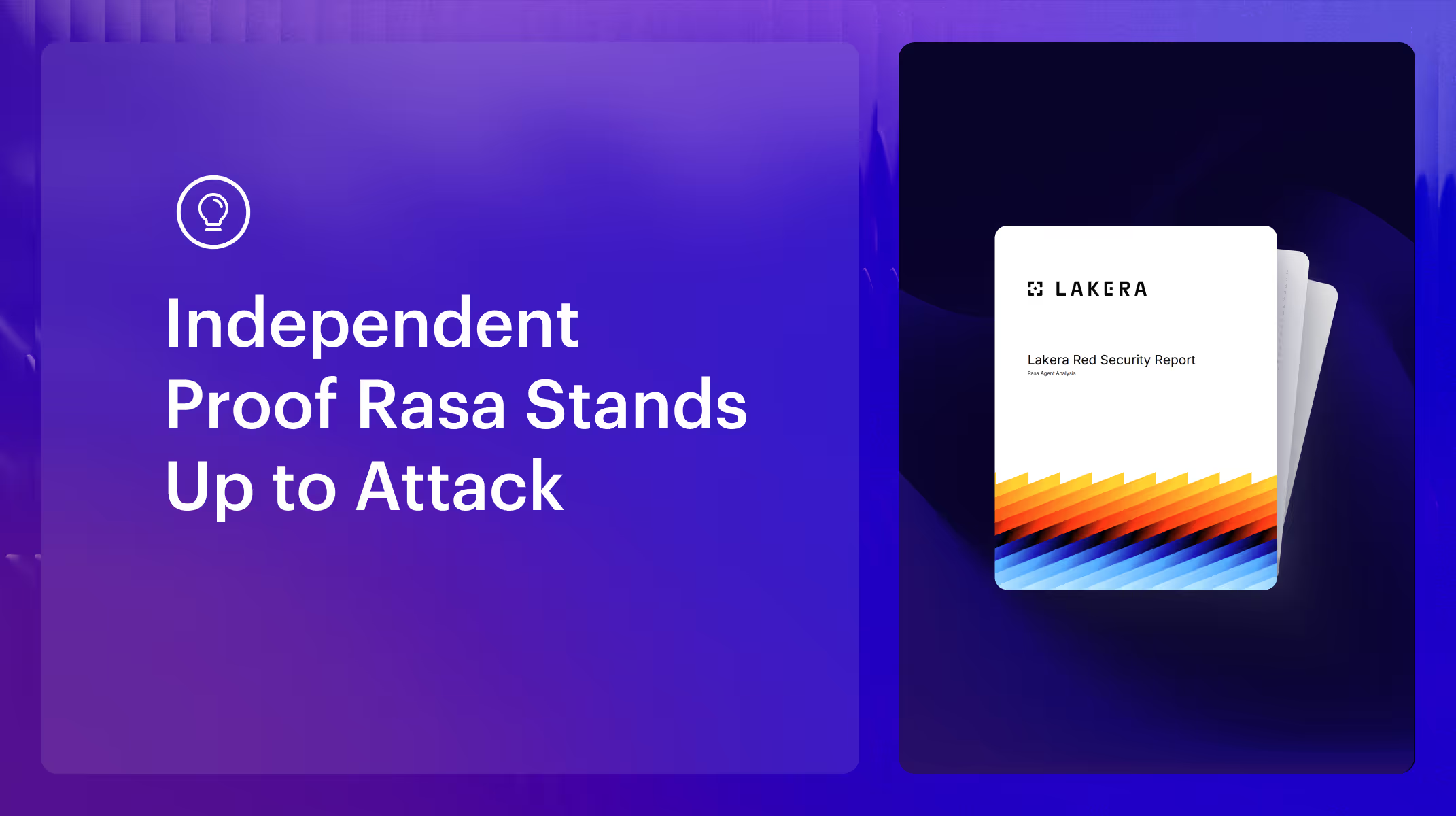TL;DR: Chain of thought (CoT) prompting strengthens large language models (LLMs) by guiding them to “think aloud,” breaking problems into logical steps before producing answers. This improves accuracy, reduces hallucinations, and helps AI agents handle multi-step queries, layered intent, and logic-heavy tasks more reliably. While not necessary for every interaction, CoT prompting is especially valuable in high-stakes, regulated, or complex scenarios where precision and trust are essential.
Modern enterprises increasingly rely on AI agents to help manage complex, high-volume tasks. But the reality is, traditional model performance often falls short when it comes to problem-solving and reasoning across multi-step tasks. Teams need solutions that can navigate layered projects, reduce errors, and deliver more reliable results.
Chain of thought prompting (CoT prompting) is the way forward. It’s an emerging tool used to enhance large language models’ (LLMs) ability to reason. By encouraging LLMs to “think aloud,” CoT prompting breaks problems into smaller, logical steps before producing a final answer. This tactic helps AI agents effectively and accurately handle more complicated requests.
Below, we’ll explore how to scale task automation using AI agents without sacrificing quality—covering CoT prompting, why it matters when designing your AI agents, and when to use it.
What is chain of thought prompting?
CoT prompting is a technique that guides the AI model to generate intermediate reasoning steps before answering a query. Instead of providing an immediate, direct response, the model breaks the problem down into logical steps that lead to a conclusion.
Think back to math class when your teacher asked you to show your work rather than just writing the answer. Laying out each step helped clarify your thought process, catch mistakes, and improve the overall accuracy of your answer. Similarly, CoT prompting is the teacher that encourages LLMs to reason more thoroughly, handle complex problems, and provide more consistent and valid answers.
How CoT prompting improves LLM reasoning
With CoT prompting, your team can get more from LLMs due to an increased ability to reason through complex tasks step by step. Instead of jumping to an answer based on pattern recognition or even guesswork, the model uses intermediate reasoning, making its workflow more deliberate and precise.
This technique is part of a broader set of prompt engineering practices designed to improve LLM performance through strategic and structured inputs. By guiding the model to think in logical, sequential steps, CoT prompting helps prevent the kind of “shortcut thinking” that leads to errors and guesswork.
CoT prompting also improves AI’s ability to handle nuanced, multi-intent, or ambiguous user inputs. For example, a customer may call a support line and say, “I need to change my flight. Also, can I add a checked bag and make sure I still get my loyalty points?”
In this situation, a traditional model may only pick up on the first request, whereas a CoT-prompted model would reason through each request sequentially to provide a comprehensive answer.
Why orchestration matters when using chain of thought prompting
CoT prompting is a powerful reasoning tool, but it works best when the steps are effectively guided and coordinated. This means ensuring the AI model understands when to reason through a problem, when to retrieve more relevant facts, and when to escalate to a human or another system. Many enterprises use a platform like Rasa to support this modular approach, building out AI agents that can manage complex interactions.
Why structured reasoning matters for AI agent design
When customer conversations get complicated, logic matters as much as language. Structured, logical reasoning via CoT prompting gives AI agents the framework to think through problems instead of reacting to them.
Here’s why that’s critical for AI agent design in customer support settings.
Handling complex customer questions more reliably
When a customer calls a support center, they often have layered questions that require artificial intelligence to understand multiple components at the same time. For example, they might ask, “Why was my payment declined, and how can I fix it?” To answer both parts of the question accurately, the AI agent must reason through the cause, identify possible solutions, and communicate them clearly.
CoT prompting helps AI agents tackle these multi-step inquiries by guiding them to break the question into manageable reasoning steps. The agent can consider each aspect of the question before generating a response, reducing errors and ensuring the customer receives accurate and complete guidance.
For customers, this means more helpful, satisfying interactions with your business—and a greater chance they’ll keep coming back to you.
Improving fallback and recovery in conversations
Even the most advanced AI agents will encounter questions or situations where the correct response isn’t immediately clear. CoT prompting helps these models recognize when that is the case by guiding them through the problem step by step.
This is a powerful capability, because when an AI agent detects uncertainty, it can defer intelligently, ask clarifying questions, or escalate to a human agent rather than simply guessing. This structured approach limits the risk of providing incorrect or misleading answers, which helps build trust with your customers.
Reducing hallucination risks in LLM-powered agents
Sometimes, LLMs can produce confident but incorrect or even fabricated responses, known as “hallucinations.” CoT is able to cross-check facts, follow defined workflows, and recognize inconsistencies before responding—but only if it first breaks the problem down into smaller, logical components. The resulting output is more grounded and reliable.
For enterprises, reducing hallucinations means your AI agent can be trusted to provide accurate, actionable guidance to customers. This is particularly important in scenarios or regulated industries where precision and compliance are key.
When to use chain of thought prompting
Without a doubt, CoT prompting enhances an AI agent’s reasoning process—but it isn’t necessary for every interaction. As a leader or developer, it’s important to know when CoT prompting can truly add value to your AI agent and overall business and when a simpler approach might work just as well.
The following highlights scenarios where step-by-step reasoning can add real value, like handling multi-step questions, managing risks, interpreting layered intent, and tackling logic-heavy tasks.
When customer questions require multi-step reasoning
CoT prompting is especially useful when customer queries involve multiple questions or interdependent issues. Think troubleshooting technical problems, resolving billing errors or confusion, or processing requests with multiple components.
The AI agent can handle these multi-part tasks more accurately and efficiently when it reasons through them in orchestrated steps. It does that by breaking down each component of the query, evaluating possible solutions, and then providing a clear and actionable response. That way, you won’t be left with a dissatisfied and frustrated customer. Instead, customers get help resolving issues quickly via a single, simple conversation.
When accuracy and risk management are critical
Sometimes, your AI agent may be helping with tasks that carry higher stakes, like compliance inquiries, sensitive financial interactions, or regulated processes. In that case, exactness is essential. With CoT prompting, the agent can produce responses that are correct and easier to audit and verify.
In situations like this, CoT prompting can be paired with techniques like few-shot prompting. That’s when an agent uses examples of a task to guide its own behavior. Framing few-shot examples to include intermediate reasoning steps helps reinforce structured thinking and boosts accuracy on high-risk tasks. This gives you an agent you can trust with sensitive, high-stakes information and gives your team the time and space for other important work.
When conversations involve ambiguous or layered intent
Customers often ask open-ended, ambiguous, or multi-intent questions that require more complex reasoning tasks from your AI agent. For example, they might ask, “Can I update my payment method? Also, why did my last transaction fail?” In situations like this, the AI agent must parse multiple intentions and respond appropriately to each. This contrasts with many traditional AI models, where the system may choose to answer just one of the questions and leave the rest unanswered.
CoT prompting helps the AI agent to unpack these complex inputs by breaking the question into individual components and reasoning through each step before generating a response. This structured approach:
- Improves understanding
- Reduces the chances of misinterpreting the customer’s questions
- Helps it deliver answers that address the customer’s request in a single, coherent conversation
When tasks require logic, math, or verification
Most human agents have answered calls that required precise logic or calculations to come to a definitive answer, and the same is true for AI agents. That might include validating form entries, determining eligibility, or setting up payment plans.
In these cases, the AI must apply multiple rules or conditions to provide a correct answer. Without structured reasoning, even advanced LLMs can make errors or provide incomplete guidance.
CoT prompting supports these logic-heavy tasks by guiding the agent to reason through them step by step, making sure to consider and apply all the necessary rules.
Zero-shot CoT prompting is a variation of this technique that lets the model follow structured reasoning without relying on pre-written examples, like few-shot prompting requires. Instead, it uses sample interactions to guide behavior. Both approaches are effective in leading AI to an answer and an interaction the customer can trust.
Better AI agents start with better reasoning
CoT prompting guides your AI agent to reason more effectively, making them better equipped to handle complex, multi-step tasks, layered questions, and logic-heavy scenarios. By guiding the model through structured, step-by-step reasoning, your AI agent can reduce errors, improve accuracy, and, best of all, deliver a truly satisfying customer experience.
But technical teams building AI agents should understand when and why to use a structured reasoning model. Sometimes a simpler model is effective, but other cases may require one that thoughtfully works through multi-step tasks in an accurate way—especially in high-stakes or regulated contexts.
Ready to explore how advanced reasoning can make your AI smarter and more reliable? Connect with a Rasa expert today.






